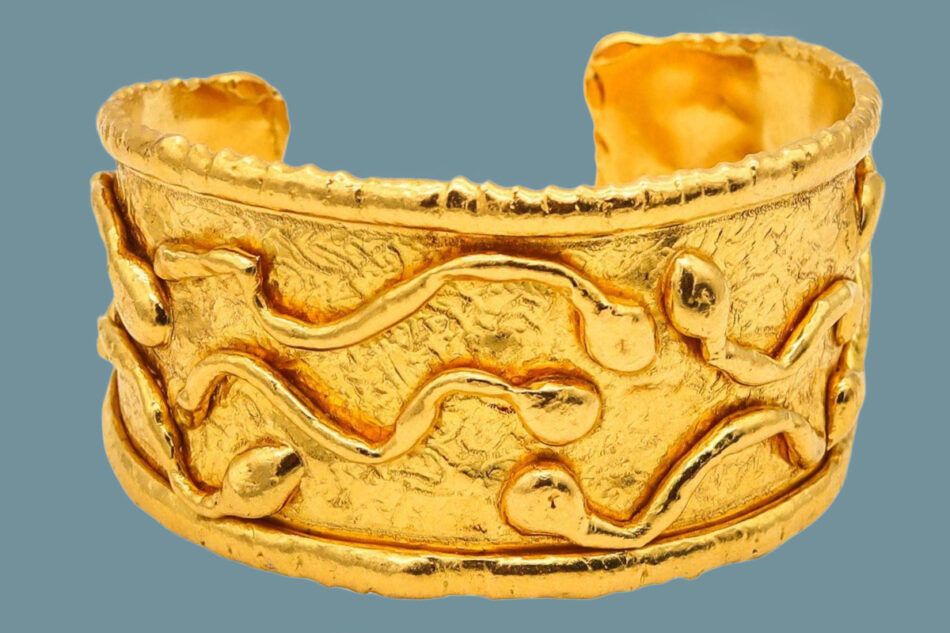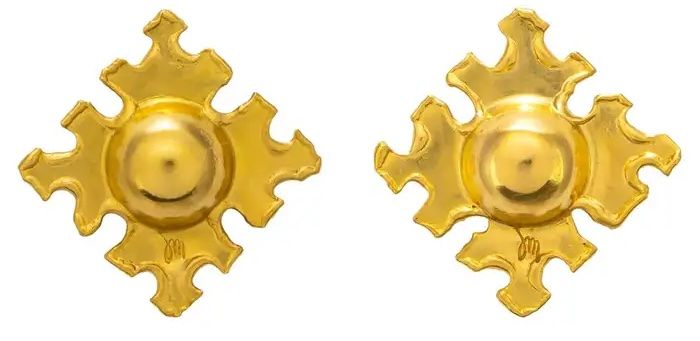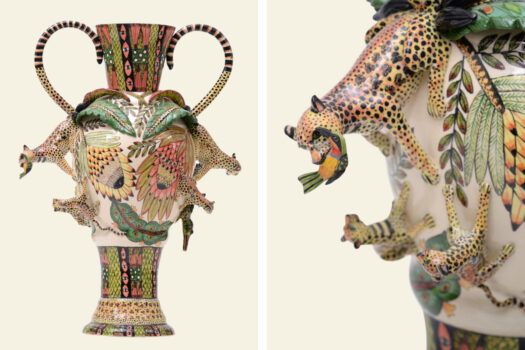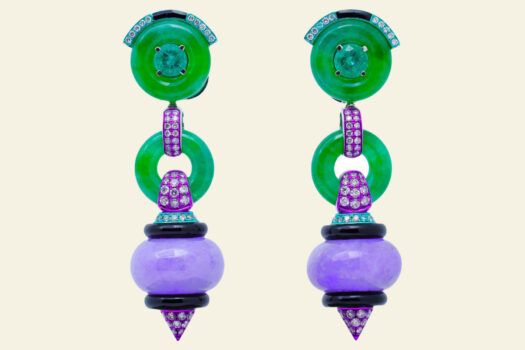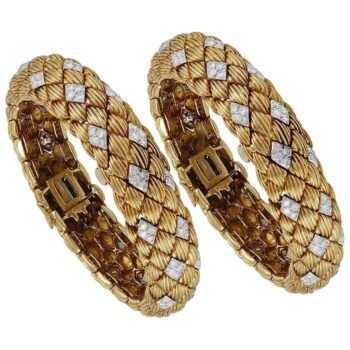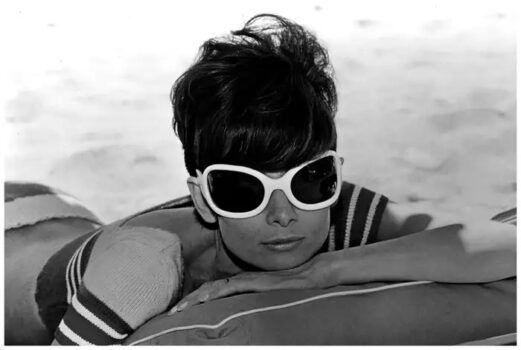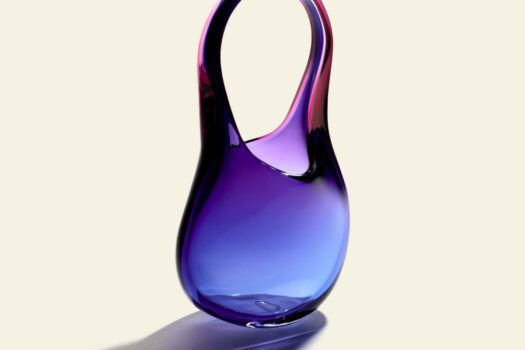First things first: Jean Mahie is not a person. It’s the name of a family business that paired emerging Tunisian painter and sculptor Jacline Mazard with her father-in-law, Jean-Marie Mazard, a French businessman turned artist. Established in 1969, their partnership blossomed into a jewelry brand revered for its use of 22-karat gold and craftsmanship borrowed “from the Anatolians, Egyptians, Romans and Mayans — a little bit of this and that,” says Adriana Linares, an associate at Treasure Fine Jewelry, in Miami, whose offerings include some superb Jean Mahie pieces. One such item is this cuff from 1978, when Jacline’s name had attained a certain prestige. Her pieces stood out for the rich yellow of their goldwork — and their primal energy.
Her work, according to Linares, drew from early civilizations, natural and religious motifs, eroticism and the Feminist movement of the 1960s.
“High-karat gold is very soft and manageable, and when an artist uses it as a primary material, it can be sculpted as clay,” she notes. “Established jewelry houses like Van Cleef & Arpels and Cartier were amazed by Jean Mahie’s use of sculpted gold and used the workshop to produce special custom pieces for their high-end clientele, such as Elizabeth Taylor.” Later, Neiman Marcus commissioned Jean Mahie pieces for its U.S. stores.
All Jean Mahie pieces have a hand-hewn, perfectly imperfect quality. Like many of them, the cuff conveys the gravitas of an ancient artifact. It looks and feels remarkably substantial (actual weight: 86 grams).
And is that a snake motif?
Possibly. But Linares says she sees a clear depiction of gametes in the gold’s textured surface. And given Jacline’s previous exploration of erotic themes, an artful rendering of the literal life force might be the most accurate interpretation. That said, “these little sculptural figures can be whatever your imagination can create,” notes Linares.
